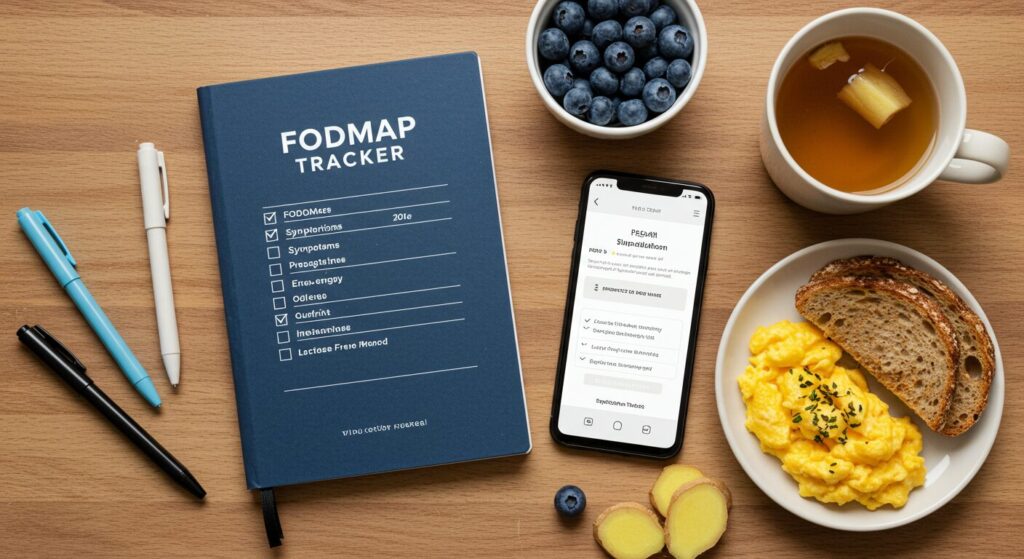
FODMAP
$11.75 — or $11.75 Original price was: $11.75.$9.99Current price is: $9.99. / week
The FODMAP (fermentable oligosaccharides, disaccharides, monosaccharides, and polyols) diet is a fascinating dietary approach designed to manage symptoms in individuals with irritable bowel syndrome (IBS) or other digestive sensitivities. FODMAPs are a group of fermentable carbohydrates that can be poorly absorbed in the small intestine, leading to symptoms such as bloating, gas, abdominal pain, and altered bowel movements.
Ingredients
Cal
N/A
Prot
N/A
Carb
N/A
Fat
N/A
Our Take On FODMAP
The FODMAP (fermentable oligosaccharides, disaccharides, monosaccharides, and polyols) diet is a fascinating dietary approach designed to manage symptoms in individuals with irritable bowel syndrome (IBS) or other digestive sensitivities. FODMAPs are a group of fermentable carbohydrates that can be poorly absorbed in the small intestine, leading to symptoms such as bloating, gas, abdominal pain, and altered bowel movements.
The FODMAP diet involves a systematic process of eliminating high-FODMAP foods from the diet and then gradually reintroducing them to identify specific triggers for symptoms in each individual. High-FODMAP foods include certain fruits (e.g., apples, pears), vegetables (e.g., onions, garlic), legumes, wheat, and lactose-containing dairy products.
During the elimination phase, individuals follow a low-FODMAP diet, which involves consuming foods that are naturally low in FODMAPs. This typically includes foods such as lean proteins, low-lactose dairy alternatives, gluten-free grains (e.g., rice, quinoa), and select fruits and vegetables that are low in FODMAPs (e.g., spinach, blueberries).
The consumption ratios on the FODMAP diet can vary depending on individual tolerance levels and the specific needs of each person. The emphasis is on minimizing or avoiding high-FODMAP foods and selecting low-FODMAP alternatives to manage symptoms. It is recommended to work with a registered dietitian who specializes in the FODMAP diet to receive personalized guidance and support throughout the elimination and reintroduction phases.
Scientifically, the FODMAP diet has been shown to be effective in managing symptoms of IBS in many individuals. Research suggests that reducing the intake of high-FODMAP foods can help alleviate digestive symptoms, such as bloating and abdominal pain. The systematic reintroduction of FODMAPs allows individuals to identify specific trigger foods and develop a more tailored long-term dietary plan.
This diet involves restricting or minimizing the intake of certain types of carbohydrates that are known to be high in FODMAPs. These include:
Oligosaccharides: Restricting foods such as wheat, rye, onions, garlic, legumes (such as chickpeas and lentils), and certain fruits (such as apples and pears).
Disaccharides: Limiting lactose-containing dairy products such as milk, yogurt, and soft cheeses. Lactose-free alternatives can be consumed instead.
Monosaccharides: Reducing intake of high-fructose fruits such as apples, pears, and honey, as well as excess consumption of foods with a high fructose-to-glucose ratio.
Polyols: Avoiding or minimizing consumption of sugar alcohols (e.g., sorbitol, mannitol, xylitol) often found in certain fruits (such as stone fruits like peaches and plums) and some artificial sweeteners.
It is important to note that the FODMAP diet is not meant to be a long-term restrictive diet but rather a temporary elimination and reintroduction protocol. The purpose is to identify specific trigger foods that may exacerbate symptoms in individuals with digestive sensitivities, such as those with IBS. Once trigger foods are identified, a more personalized and sustainable dietary plan can be developed to meet individual needs while minimizing symptoms. Working with a registered dietitian who specializes in the FODMAP diet is highly recommended to ensure proper guidance and support throughout the process.

